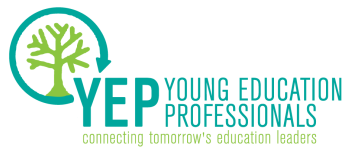 Credit: The Cutting Edge
Credit: The Cutting Edge Fortunately, the healthcare system is making advancements to improve just that. Last month, it was announced that instead of paying for volume, the healthcare system would hasten its transition to paying for value. This change will lead doctors and other healthcare providers to determine, and address, underlying causes of health complications (also known as the social determinants of health). Coordinated care, the collaboration of various healthcare professionals like nurses, doctors, therapists, and dietitians, with families and patients is one method by which the healthcare system will work to achieve these outcomes.
It’s potentially more challenging for the education sector to make an adjustment of this sort. This change is akin to the U.S. Department of Education announcing that its funding formulae would be adjusted to pay only for educational systems that find ways to not simply advance students but to clearly show that their knowledge has increased to the level required by the system — and that they are progressing toward becoming a productive contributor to society. That said, there are programs out there that are experiencing success in coordinating care for students and addressing what are called “social determinants of education.”
Communities in Schools is an organization that places site coordinators in schools, and they assess student needs and identify supporting organizations in the community to meet those needs. Whether those needs are safety concerns, lack of grocery stores, or poor recreation options, CIS identifies the agencies and individuals that can offer those resources in the community and partners with them to provide the services. This is an ideal arrangement for coordinated care at the individual school and community levels.
Hand-in-hand with coordination between on-the-ground professionals and organizations is coordination at the federal level. A recent announcement that Medicaid would return to funding some health services offered in school-based health centers is a primary example. Schools are the largest potential youth health delivery system in the country, and this change will allow the health system to pay for health services delivered in schools. The federal recognition of the link between health and education is promising for progress in this area.
Finally, the federal government has made other efforts that involve an investment in place-based solutions to support positive child development, among other things. The Promise Neighborhoods initiative is based on the Harlem Children’s Zone, a model support system offered in approximately 100 square blocks of Harlem to students who live in the neighborhood. The model includes educational opportunities for children from infancy all the way through high school, health resources for children and families, youth violence prevention efforts, and other social services.
The education system needs to take the lead of these initiatives if it is able to fully the educational impact that it is capable of and positioned for. Educating students is the goal of the education system, but all of us concerned with improving the education system need to take the broader view and aim to improve the entire lives of all students through a coordinated approach.
Bill Winfrey is an associate with a public policy and advocacy firm in D.C. Reach him via email or Twitter.

 RSS Feed
RSS Feed